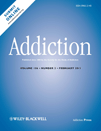THE GLASS CEILING ON EVIDENCE OF CANNABIS RELATED HARMS – FLAWED OR JUST FALSE?
While Temple et al. [1] have identified many of the challenges facing those of us working to build on the cannabis evidence base and also to act as knowledge brokers in its translation to policy and practice, they have unfortunately shed more heat than light.
I doubt any Addiction reader would disagree with their assertion that policy and prevention and intervention practices should be evidence-based and targeted, or that there are large knowledge gaps in all the disciplines now exploring substance use disorders more generally. None the less, those with responsibility to act at the systemic or individual levels to prevent, or respond to, cannabis-related problems cannot be paralysed by the less than perfect state of the evidence.
The majority of the issues raised in the review were not specific to cannabis. The problems of quantification of exposure to cannabis are common to all illicit drugs outside the laboratory. A positive correlation between frequency and quantity of use and a ‘dose’–response curve to outcomes of interest, however, are typically found, e.g. cannabis use and the risk of psychosis [2]. Even in the lamentably few studies that do measure quantity of use and intoxication more carefully, measures of quantity were supportive of the association between cannabis use and respiratory and social problems and dependence [3]. Similarly, the addition of information on cannabis potency (while interesting in and of itself) will not completely answer the question of an individual's actual cannabis dose.
The lengthy discussion of the incompatibility issues between the two major classification systems in mental health disorders, and the heterogeneity in patterns of use and dependence, were also not cannabis-specific and were at times confused. It should be noted that even when techniques such as latent class analysis, as called for appropriately in this paper, are applied to nationally representative samples, the class featuring earliest onset and highest frequency of use (22% of cannabis users) were disproportionately linked to key harms including other illicit drug use, and cannabis related health, driving and social problems [4].
The most disappointing omission from the review was the high-quality evidence provided by the birth cohorts (some over more than 20 years) [e.g. [5,6]] and targeted cohorts of adolescent cannabis users [e.g. [7,8]] that have been able to shed a clear beam of light on long-reported associations between cannabis use and psychosis and educational attainment in particular. These and meta-analytical studies [e.g. [9]] have provided the level of consistent evidence that calls for policy and clinical action, even allowing for the ever-shrinking possible candidates for residual confounding.
A clue to the author's priorities for inclusion in the review may be gleaned from the focus on cannabis prohibition, which is unrelated to the stated aims of the paper, in the introduction. Their perspective was illuminated further by the assertion that cannabis use is ‘relatively normalized among young people in western cultures’. Cannabis use has been typically declining or at least stabilizing over the past few years [10], particularly in Australia, where recent use of cannabis has dropped to around 13% of 14–19-year-olds in 2007 from prevalence rates of 20% for females and 36% for males in this age group in 1995 [11]. It is such false notions of normalization that public health interventions for cannabis use need to address.
While it would be laudable if cannabis researchers were uniquely able to agree and measure all aspects of cannabis use consistently, in all studies and from a holistic approach, there is more than enough evidence meeting standards such as those employed by the International Society of Addiction Journal Editors and national research councils [e.g. [12]] to inform an evidence-based response to some key issues. These should be universal and targeted approaches to reduce cannabis-related harms among the following groups: (i) adolescents; (ii) those at risk of dependence, psychosis and other serious mental health conditions, respiratory or cardiovascular illnesses; (iii) men and women trying to conceive, pregnant/lactating women and parents of infants likely to be exposed to cannabis smoke; (iv) criminal justice settings; (v) those driving or operating heavy machinery; and (vi) indigenous peoples and those marginalized and at social disadvantage where regular and/or heavy cannabis use is more prevalent.
The glass ceiling metaphor for the limits to the evidence base on cannabis-related harms is not only flawed, but is a false ceiling. It is serving to block the light to a clear view of that high-quality evidence, and the consequent pathway to action to reduce cannabis-related harms internationally, regardless of its legal status.
Declaration of interests
None.




